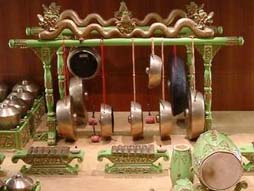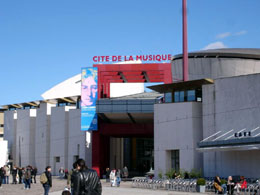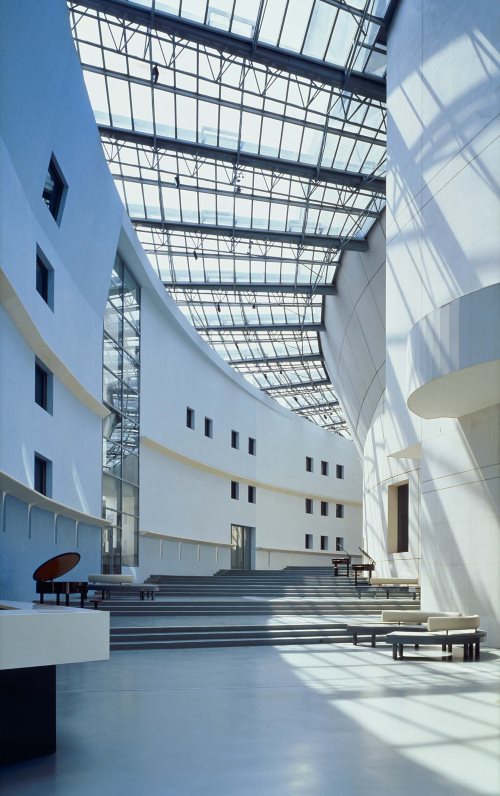Paris music museum

Paris music museum is a music museum, part of the Philharmonie de Paris in Parc de la Villette. Paris museums.
Visit Musée de la musique
Equipped with infrared headphones, the visitor of Musée de la musique - music museum in French - walks across the museum rooms and listens to music played on the beautiful old instruments in front of him. The museum has 6 000 old instruments. The museum is educating and entertaining for adults and kids. The Musée de la musique can be part of a great day in the large Parc de la Villette.

Balinese gamelang at Musée de la musique
Paris music museum: the monument
Paris music museum is housed in one of the best contemporary buildings in Paris, designed by Christian de Portzamparc. Christian de Portzamparc was the first French architect to win the Pritzker prize in 1994.
The music museum lies in Parc de la Villette. The Musée de la Musique is now part of the Philharmonie de Paris.
Locate Musée de la Musique on Paris map.

Musée de la musique, Paris
Information on Musée de la musique
Paris 75019 France
Paris metro: Porte de Pantin station on line 5
Parking at Musée de la musique
Open Tuesday to Friday – 12 pm to 6 pm, Saturday and Sunday – 10 am to 6 pm. The Museum is closing at 5 pm on 24 and 31 December. Closed on December 25th, January 1st and May 1st.

Musical instruments in Musée de la Musique
Stay in top Paris hotel

La Villette hotel
Hotel Restaurant Au Boeuf Couronné offers pet-friendly accommodation with free WiFi in Paris, a 3-minute walk from the park. Guests can enjoy the on-site restaurant, one of the best meat restaurants in town, and bar. The air-conditioned rooms include a flat-screen TV with satellite channels. The rooms have a private bathroom with a shower, free toiletries and a hairdryer. All rooms are serviced by a lift. An American breakfast is served daily at the hotel. There is a terrace, a 24-hour front desk and a luggage storage on site.
Paris 75019 France

Au Boeuf Couronné hotel is near La Villette
Musée de la musique facts
Architect Christian de Portzamparc wanted the Musée de la musique in the form of a dreamlike town and a space inviting movement. Born of the desire to bring together the Paris Conservatory, its’ musical instrument museum, crammed into their premises on rue de Madrid, concert and rehearsal halls, the Musée de la Music was inaugurated in January 1995. The original project consisted of reuniting equipment intended for the teaching and diffusion of music. The architect would receive the Pritzker Prize, the architectural equivalent of a Nobel, in 1994, after a decade dedicated to the building.
Inaugurated in 1997, the Music Museum was conceived to showcase the heritage assembled since the creation in 1795 of the Paris Music Conservatory and its’ instrument cabinet. Following a competition launched in 1990, French architect Franck Hammoutène was chosen to organise the layout of the historical music zone at the heart of Christian de Portzamparc’s building. In order to protect the exhibits from the light of day while preserving the interplay between interior and exterior, the architect has chosen to play with the echo effect between the interior of the museum and the building that houses it. The surrounding architecture shows itself through a series of breaks.

Musée de la Musique